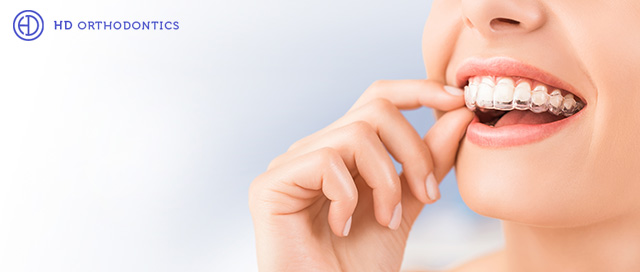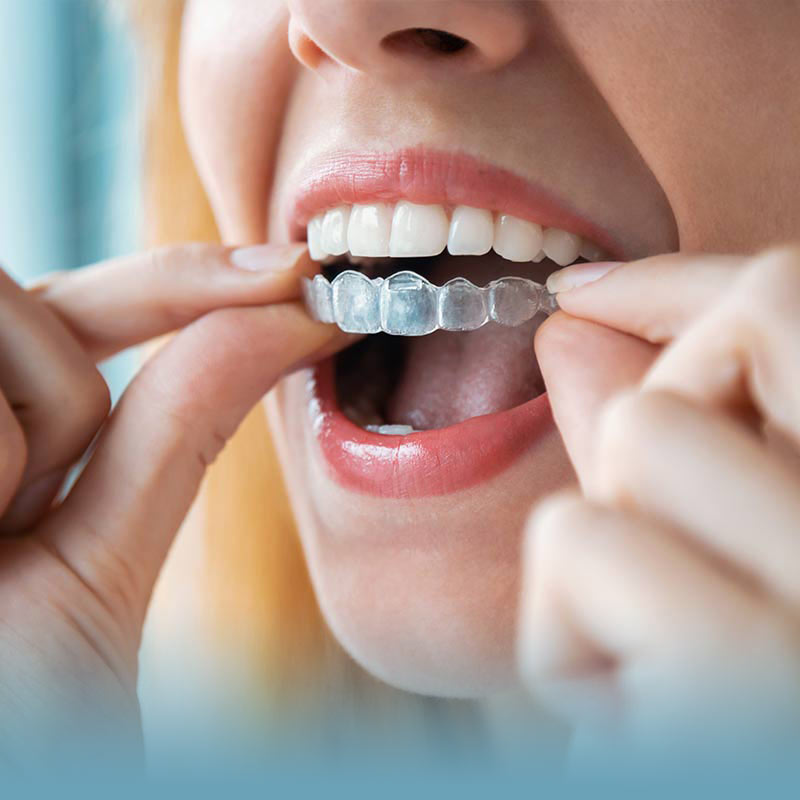Invisalign for Teenagers: A Modern Solution to Straightening Young Smiles
Invisalign for Teenagers: A Modern Solution to Straightening Young Smiles
Blog Article
Invisalign vs. Typical Braces: Which Alternative Is Right for You?
When considering orthodontic therapy, the selection between Invisalign and typical dental braces presents numerous important variables that warrant cautious analysis. Invisalign supplies a discreet option with detachable aligners, while typical dental braces offer a much more visible yet efficient solution for extreme misalignment.
Review of Treatment Options

In comparison, conventional dental braces include steel brackets and cords that are bound to the teeth. This method applies constant pressure in time to attain placement. While reliable for complicated orthodontic concerns, conventional braces need regular sees for adjustments and can present obstacles in keeping oral hygiene as a result of the difficulty of cleaning up around cables and braces.
Both choices have their merits, and the selection commonly pivots on certain dental problems, lifestyle preferences, and individual conformity. Inevitably, consulting an orthodontic professional is important for figuring out the most ideal treatment strategy customized to specific demands. Comprehending the nuances of each choice can significantly influence the general success of orthodontic treatment.
Aesthetic Factors To Consider
A significant factor affecting the selection in between Invisalign and standard braces is the visual appeal each therapy supplies. Invisalign aligners are crafted from clear plastic, making them practically undetectable when used.
In comparison, traditional dental braces consist of metal brackets and cords, which can be extra obvious. While innovations in orthodontic technology have resulted in the development of smaller braces and colored elastics, traditional dental braces still keep an even more obvious account. For some individuals, the visibility of braces might deter them from looking for required therapy.
Inevitably, the choice in between Invisalign and standard dental braces might depend upon personal preferences relating to visual appeals. People that focus on discretion often favor Invisalign, while those that are much less worried regarding presence might decide for conventional dental braces. Comprehending the visual ramifications of each choice is critical for making a notified decision that aligns with one's way of life and preferences.
Convenience and Convenience

In regards to ease, Invisalign aligners are removable, making it possible for patients to enjoy their preferred foods without limitation and preserve optimal oral hygiene. Cleaning and flossing are streamlined, as the aligners can be obtained during these regimens, whereas typical braces need mindful navigating around cables and brackets.
In comparison, traditional braces necessitate routine modifications, making them less practical for those with hectic routines. Generally, the comfort and benefit of Invisalign make it an enticing selection for many individuals seeking orthodontic therapy.
Therapy Period and Performance
While both Invisalign and typical dental braces are efficient in correcting oral misalignments, the duration of therapy can differ dramatically between the two choices. Typically, Invisalign treatment can take anywhere from 12 to 18 months, depending on the complexity of the situation. The clear aligners work by progressively changing teeth right into their wanted settings, and normal follow-ups with an websites orthodontist aid ensure development stays on course.
In comparison, standard dental braces usually need a longer commitment, normally ranging from 18 months to 3 years. This is because of their set nature and using cables and brackets, which can be more efficient for intricate instances and serious imbalances (Invisalign). The therapy performance of traditional braces is well-documented, Full Report as they enable precise modifications and higher control over tooth motion
Inevitably, the selection between Invisalign and standard braces might rest on both the anticipated therapy period and the specific oral problems available. Consulting with an orthodontist is important, as they can offer customized referrals based upon private needs, making certain the chosen technique lines up with desired results and durations.
Price Contrast and Insurance Policy Choices
Price plays a significant duty in the decision-making process for people thinking about orthodontic treatment, whether choosing Invisalign or conventional braces. Generally, the price of Invisalign ranges from $3,000 to $8,000, while standard dental braces usually set you back between $2,000 and $6,000. Variables influencing these expenses include the intricacy of the situation, the period of treatment, and geographical place.
Insurance policy insurance coverage can dramatically impact out-of-pocket expenditures. Several oral insurance policy plans supply partial coverage for orthodontic therapies, but the specifics can differ commonly. It is essential for patients to assess their insurance coverage to establish the extent of insurance coverage for either choice. Generally, traditional dental braces might be much more regularly covered by insurance plans compared to Invisalign, which some insurers categorize as a cosmetic treatment.
Furthermore, a number of orthodontic methods supply flexible layaway plan, making both therapy alternatives much more accessible. Patients ought to ask about potential funding choices and discounts for in advance repayments. Assessing the complete expense, consisting of insurance policy benefits and repayment plans, is important for making a notified decision that lines up with both visual preferences and budget see this site plan considerations.

Conclusion
In summary, the choice in between Invisalign and conventional dental braces rests on multiple variables, including aesthetic choices, comfort, therapy duration, and expense. Invisalign offers a very discreet, detachable option that facilitates oral hygiene and nutritional adaptability, while typical braces may be more suitable for complicated dental issues and usually come at a lower price point. Inevitably, assessment with an orthodontist is vital to examine individual circumstances and figure out one of the most proper treatment choice for attaining ideal oral positioning.
When taking into consideration orthodontic treatment, the selection between Invisalign and typical dental braces presents numerous important elements that merit cautious evaluation.Comparing Invisalign and typical dental braces reveals distinct therapy alternatives for orthodontic correction.While both Invisalign and traditional dental braces are efficient in dealing with oral misalignments, the period of therapy can differ considerably between the two options.Expense plays a significant duty in the decision-making process for individuals taking into consideration orthodontic treatment, whether deciding for Invisalign or conventional dental braces.In recap, the option between Invisalign and conventional dental braces hinges on numerous aspects, consisting of visual choices, convenience, therapy duration, and expense.
Report this page